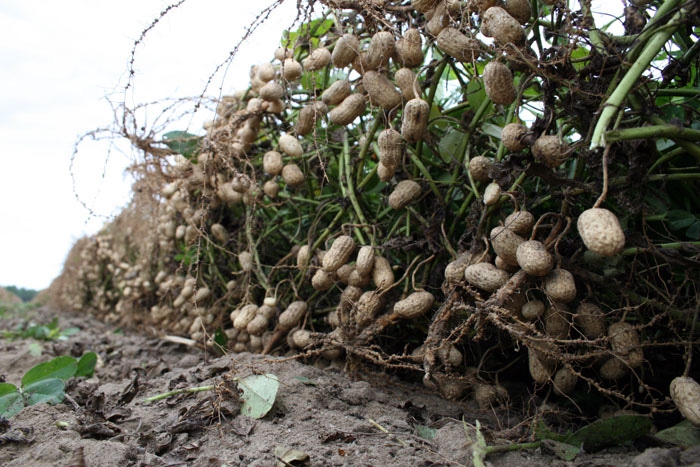
Peanut maturity varies widely across Florida Panhandle
The two main factors that determine how fast peanuts mature are temperature and rainfall, something that can be equated using “Adjusted Growing Degree Days,” or AGDDs.Early in the season, peanuts accumulate AGDD’s slowly because the air temperatures tend to be relatively cool. In July and August, air temperatures increase and AGDDs accumulate rapidly.
August 17, 2013

Peanut maturity is a key factor that determines yield and grade of peanuts.
Since peanuts are an indeterminate crop, they set their fruit over a long period of time as opposed to all at once. The variability of pod maturity can sometimes make it difficult to decide when to dig or harvest the crop.
The two main factors that determine how fast peanuts will mature are temperature and rainfall. Researchers from the Universities of Florida and University of Georgia as well as the National Peanut Lab have called the combination of these factors “Adjusted Growing Degree Days,” or AGDDs.
An AGDD is simply the average air temperature, plus the total rainfall on a given day.
The addition of AGDD’s over a growing season helps determine the maturity of a peanut crop because it takes into account the temperatures and rainfall over the season. Research shows that peanuts are mature at around 2,500 AGDD’s.
Early in the season, peanuts accumulate AGDD’s slowly, because the air temperatures tend to be relatively cool. In July and August, air temperatures increase and AGDDs accumulate more rapidly. Since water is also a factor in AGDDs, shortages of water slow down AGDD accumulation, whereas ample water speeds up maturity.
The earliest planted peanuts (April 25) are around 1,900 AGDDs and will be mature at around 2,500 AGDDs. If max air temperatures stay in the mid- to low 90s and rainfall continues, it will probably be another four weeks until peanuts planted on that date are ready.
Peanuts planted a month later (May 25) may mature faster than expected, given mid-90 degree temperatures and additional rainfall, shortening the number of days to reach maturity.
The AGDD method gets us close to determining maturity, but we still need to use the hull scrape method to determine when to dig. This method uses a pressure washer to remove the outer layer of the peanut hulls, revealing the color of the pod. Pods are then grouped by color onto the Peanut Maturity Profile Board and the date for digging is determined.
To read more or to see a chart showing peanut AGDDs for various planting dates in north Florida, click here.
You May Also Like



